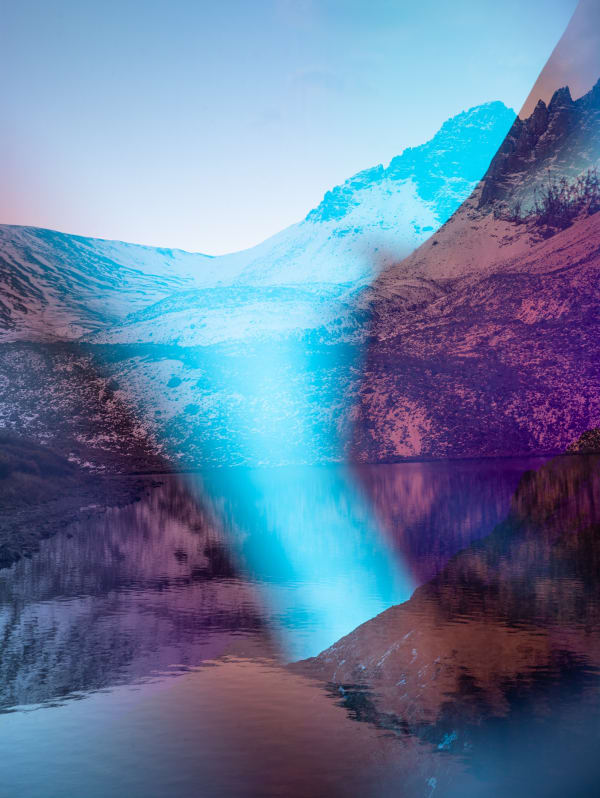300 Days of Sun: GROUP EXHIBITION
-
-
The exhibition title 300 Days of Sun is derived from Colorado’s consistent sunshine, being one of the only states to have 300 days of sun per year. While the sunlight is nearly constant here, Colorado’s changing topography, altitude, and temperature bends light in different ways so that one’s perspective is continually shifting depending upon the location and time of year. This exhibition explores these changing points of view as a metaphor for the way in which contemporary artists look at light and harness it in their work.
Liz Markus paints work informed by her experience growing up as a Gen-Xer and influenced by the rawness of punk and grunge music. Her process is intuitive but often inspired by continuing points of interest including hippies, dinosaurs, and socialites. Guided by the subconscious, and informed by the unstructured strokes of the abstract expressionists and color-field painters, her bold paintings speak to the non-verbal mind, tackling a generation that can recognize the symbols of an era. Her washed out canvases featured here suggest a particularly shaped face that is both someone and no one at the same time. The archetype of a hippie finds its way in just enough to hint at a modern American narrative rooted in the mystique of California’s West Coast. With more intuition than intention, Markus’ figures emerge like a scent that lingers in the air long after it’s gone.
Liz Nielsen uses pure light to create photographs without a camera. Her light paintings are born in an analog darkroom by exposing light sensitive paper and processing it through traditional color chemistry. Like Liz Markus, her process is guided by intuition and cemented by trust. Trust in the process and in the unpredictability of its outcome. Nielsen composes her images in complete darkness. While she conceives her compositions ahead of making the work, anything can happen in the darkroom to pull it in a different direction. Much like life itself, we can plan our desired path but chance will always intervene. Rather than rejecting this idea, Nielsen embraces what can be perceived as imperfections with grace and authority, making the unknown a part of the process. Much like the Japanese technique of Kintsugi, where broken ceramics are joined back together with gold exposing the history of an object, there is a celebration in welcoming risk into the journey.
Akin to Nielsen’s spirit, Terri Loewenthal pushes the boundaries of the photographic medium through a device of her creation that bends light and perspective into a harmonious symphony of kaleidoscopic effects. Rather than confine her practice to the lab, Loewenthal seeks inspiration from the great outdoors by immersing herself in remote landscapes far away from any human trace. Her pilgrimage to find such locations is almost ritualistic. Her equipment, worthy of a high-mountain sherpa, does not prevent her from reaching the edge of society in search of what the romantics called the Sublime. Her approach to landscape photography is a simple byproduct of her journey - whereby the journey itself becomes the true focal point of her work.
In contrast, Phillip K. Smith III creates spaces that exist in an ethereal parallel to our seen world. True to his origins as an architect, he builds areas that are enhanced by the presence of light- inviting an expansiveness that we could not access otherwise. The shifting colors in his light sculptures interact in mid air to transform our experience and open up a luminescent portal where before, there was a void. This window invites us into a new existence that taps into our emotional memory, enhancing the senses beyond our physical perception. There is a relationship with these objects that opens us to new ways of seeing and feeling, much the way meeting someone new can provide access to a place and experience we could not have otherwise. The reflective quality of his surfaces adds yet another layer to this awareness, involving ourselves as we are seen by the outside world.
Ryan Crotty’s paintings oscillate between stillness and movement. His layered neon canvases, rooted in the tradition of mixed media printmaking, glow under the right light as if they were frozen in time. Layers of color reveal themselves, projected towards the edges of the painting and dripping the excess while keeping just the bare minimum. This thinness, like a bright veil, exposes dramatic segments of color that are only exposed because of this gesture. Crotty’s work glows from the inside out, illuminating the heart of each color and reflecting back to us the possibility of shining in our best light.
-
SELECTED WORKS
-

Phillip K Smith III
10 Columns: Medium-Medium, 2019
-

Phillip K Smith III
10 Columns: Small-Medium, 2019
-

Phillip K Smith III
10 Columns: Small, 2019
-

Terri Loewenthal
Psychscape 901 (Cathedral Lake, CO), 2022
-

Terri Loewenthal
Psychscape 170 (Rustler Gulch, CO), 2022
-

Terri Loewenthal
Psychscape 544 (Pyramid Peak, CO), 2022
-
-
INSTALLATIONS
-
Artist











































